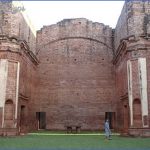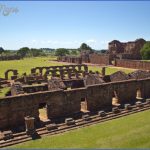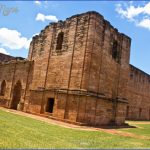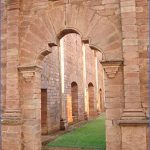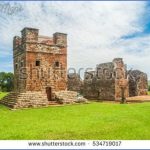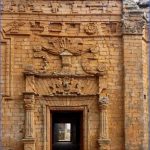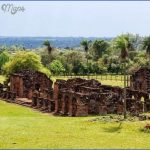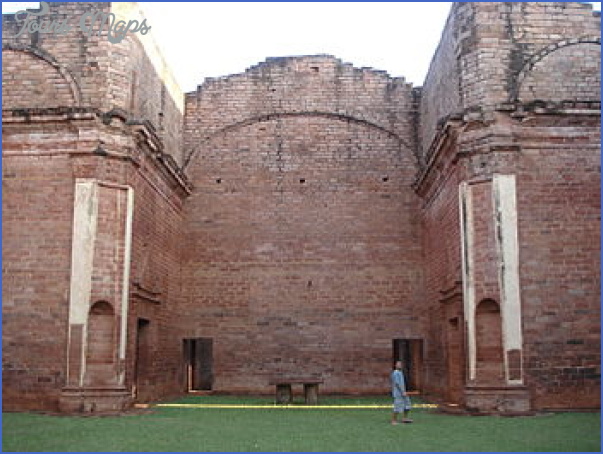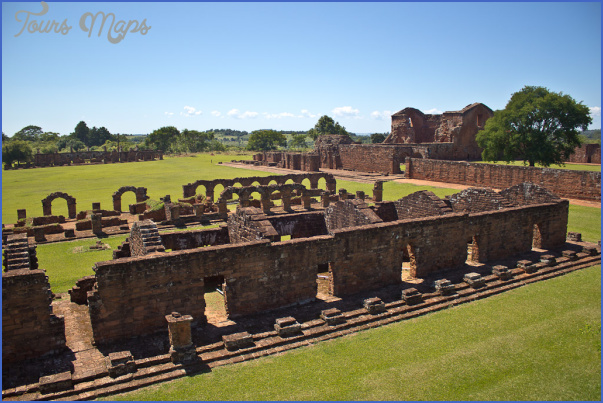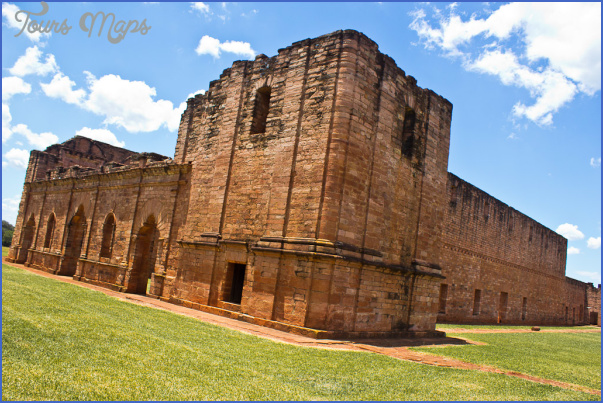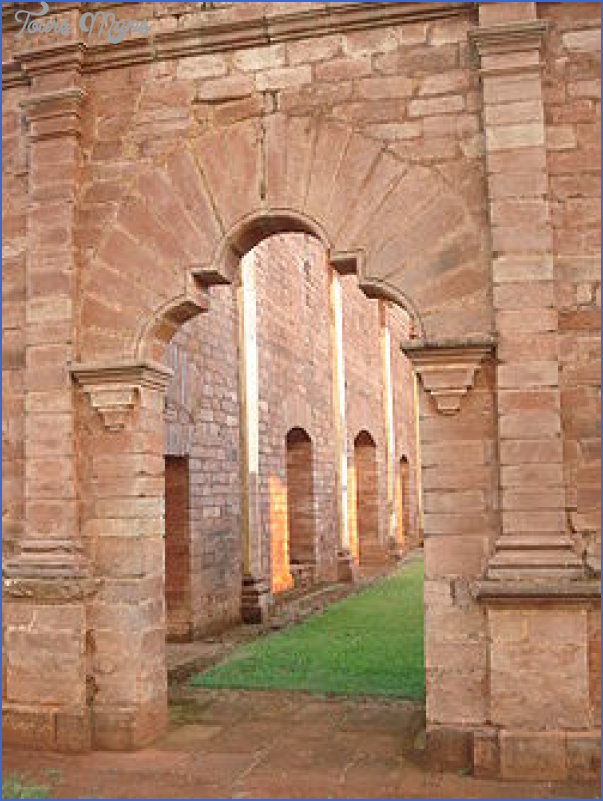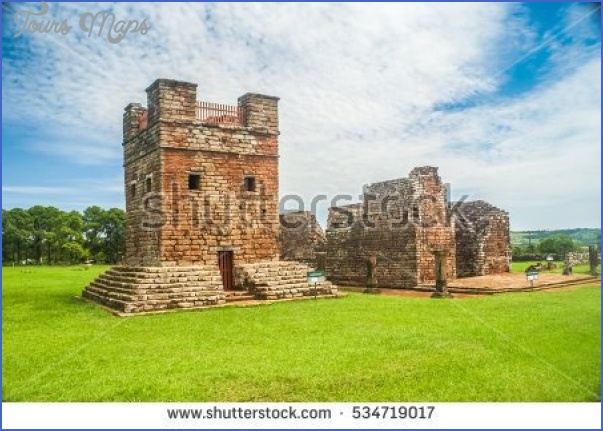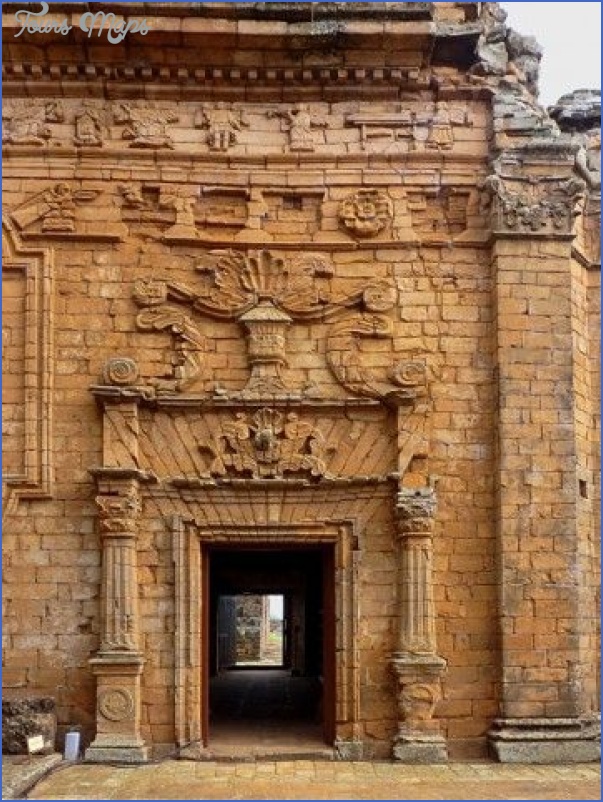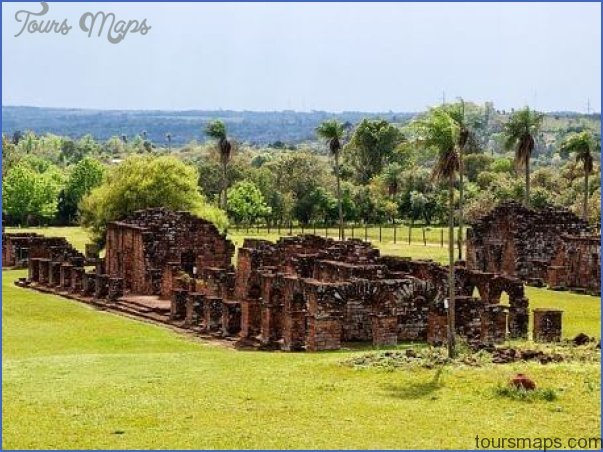The ruins have recently received special attention from Paraguay’s Ministry of Tourism which developed the Ruta Jesuitica (Jesuit Route) project to improve services, activities and information available related to the Jesuit missions. This project lead to the development of the Light and Sound
show in Trinidad and construction of an astronomy center at San Cosme y Damian. Perhaps the most useful development has been the introduction of a single ticket (cost: Gs. 25,000 with Paraguayans and residents of Itapua receiving special discounts) valid for entry to all three sets of ruins. This can be purchased at any of the ruins.
Each set of ruins has one to two guides on staff. If possible it is worth waiting for one to become available for a guided tour. For the most part the ruins are not labeled and visitors are almost entirely dependent on guides to provide historical context and explanations. All the guides work for tips and many are local university students. Very few speak English. If you wish to receive a guided tour of the ruins in English your best bet is to contact the guides listed (this can be hit or miss) or visit the ruins with a tour operator.
Of the ruins Trinidad is the most easily accessed by public transportation, followed by Jesus. Travelers on a budget will want to stay in Encarnacion although the lodging along Route 6 is a worthwhile splurge and significantly decreases the travel times to Trinidad and Jesus. San Cosme y Damian can be reached by bus from either Encarnacion or Coronel Bogado. Even with a private vehicle those who wish to visit all three ruins should allow for two days – one for Trinidad and Jesus and the other for San Cosme y Damian. The distance and the sights to see are too much for one day -especially since both Trinidad and San Cosme y Damian now offer night time activities as well.
Anatomy of a Jesuit Mission
Each Jesuit mission followed a similar layout, with the main church (iglesia mayor) at the epicenter of mission life – both literally and figuratively. At first the churches, along with other buildings were made out of adobe and wood but later there was a shift towards using stone (mostly locally sourced sandstone) as construction materials; only the stone structures have withstood the tests of time. Given its importance it is no surprise that the church was the most ornately decorated of all the mission’s buildings. The stones of the church itself were carved – angels and flowers lined the ceilings and there were elaborately framed niches holding stone statues (Trinidad is home to the only intact statue), and in many cases the walls were stuccoed and painted with frescoes. Nature was a popular source of inspiration and decorations often included local flora such as hoja de guembe, guayaba, and the passion fruit flower. In addition the churches were adorned with beautifully lifelike wooden scultpures (imagenes) of saints (these can be seen in Jesuit museums).
In front of the church there extended a large plaza, which, much as in modern day Paraguayan towns, was used for all manner of social and religious activities. A statue of the mission’s patron saint (or virgin) was placed in the center of the plaza. Next to the church were a series of buildings which included the residence for the Jesuit priests in charge of the mission along with the schoolrooms, workshops, and food storage rooms (these remain intact in San Cosme y Damian). Behind these buildings lay the cemetery and orchard. The plaza was lined on three sides by indigenous dwellings (casas de indios). These long buildings had covered corridors (corredor yere) running along their length and each room belonged to one family. The curved ceramic tiles which lined the roofs of these buildings were shaped upon workers’ thighs ( muslos in Spanish) thus earning the name musleras Many of the buildings included channels for collecting rainwater which was then diverted into the latrines and mission orchard.
Crossing the Border to Posadas
Several buses run between the bus terminal in Posadas to the bus terminal in Encarnacion with stops along the way. Buses have signs saying Servicio International and can be caught on Carlos Antonio Lopez in front of the terminal (the bus does not enter the terminal parking lot). Buses start running at 5am and cost Gs. 5,000 (or 3 Argentine pesos – the buses accept either currency). As citizens of Mercosur countries, Paraguayans and Argentines do not have to disembark for immigration controls at the border – as a result the buses do not automatically stop to let passengers off – you must ask the bus driver to be let off. The bus will not wait for you while you go through immigration but if you save your ticket you can get on the next bus for free. This process is repeated at the immigration controls on the Argentine border as well.
Immigration control office: 071 206 286, open 24 hours.
Visiting Itapua’s Jesuit Ruins Photo Gallery
Maybe You Like Them Too
- The Best Cities To Visit in The World
- World’s 10 Best Places To Visit
- Coolest Countries in the World to Visit
- Travel to Santorini, Greece
- Map of Barbados – Holiday in Barbados

